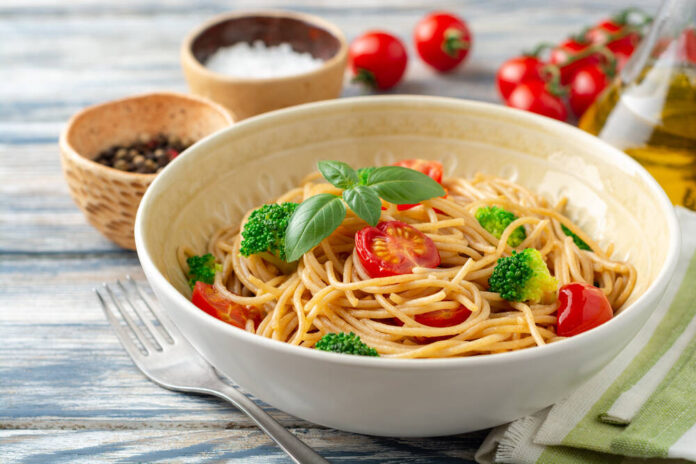
If there is one thing we hear over and over again when considering a healthy diet, it’s “eat whole grains.” Selecting whole wheat, for example, ensures the most nutritional benefits, including the bran and the germ that are stripped from refined wheat, along with their vitamin E, major B vitamins, antioxidants, fiber, protein, and healthy fats.
That is all fine and good on paper, but for the many people raised on pasta made with refined flour – also known as white pasta – whole-wheat pasta can be a little jarring to the palate. Although once accustomed to its nutty taste, some find it hard to return to the white stuff; for others, it’s a road just too tough to hoe.
Aversion to whole-wheat pasta is understandable given the earliest commercial incarnations of the product, which could be described as landing somewhere between bitter shoelaces and curls of grainy cardboard. But the pasta industry has really endeavored to revamp their offerings, and many of them are actually … lovely.
For those with traumatic memories of old-school whole-wheat pasta and for others clinging to resistance, there are ways to help. The following tricks can persuade even the most reluctant to succumb to the charms of white pasta’s healthier cousin.
1. Know your brands
Not all whole-wheat pasta is created equal. Good texture is dependent on high-gluten flour, which varies from brand to brand. These brands score well on taste and texture tests: Gia Russa, DeLallo, Garofalo, Barilla, Rustichella d’Abruzzo, and Bionaturae.
To that end, Barilla Plus offers a grain and legume flour blend that includes lentils, chickpeas, egg whites, spelt, barley, flaxseed, oat fiber, and oats. Accompanying a taste found comparable to white pasta, the product boasts boosted protein, soluble fiber, and a nice shot of omega-3s.
2. Cook it correctly
Whole-wheat pasta usually requires more cooking time than regular pasta, but don’t overcook it! Whole-wheat pasta quickly loses its texture if overcooked, so follow package directions carefully. Get your kitchen timer out and use it.
3. Skip the sissy sauces
If you don’t love the nutty taste, don’t use butter sauces or mild cream sauces; the inherent flavor in whole-wheat pasta will wallop delicate accompaniments. But if you must, add some strong-flavored cheese to balance the nuttiness.
4. Go big
That said, whole-wheat pasta loves big flavors. Try using a vibrant tomato sauce, chunky vegetable sauce, or a hearty pesto (a roasted jalapeno added to pesto makes the whole-wheatiness disappear). Think roasted peppers, fennel, capers, anchovies, and olives – strong flavors that can stand their own against the more assertive flavor that’s part and parcel of whole-wheat pasta.
5. Think green(s)
In the same vein, hearty greens – like broccoli rabe, chard, arugula, kale, beet greens, dandelion greens, etc. – work well to balance the nutty flavor. Sauté them with olive oil, salt, pepper, a load of garlic, and a scattering of cheese, and toss with the pasta.
Tip: When shopping, make sure to read the label to ensure you’re getting whole grains. Packages should list “whole [name of grain]” as the first ingredient, or look for the Whole Grain stamp, a yellow postage-size stamp issued by the Whole Grains Council. Be wary of labels that say “made with whole grains,” which can indicate that just a minuscule amount of whole grains were used.










